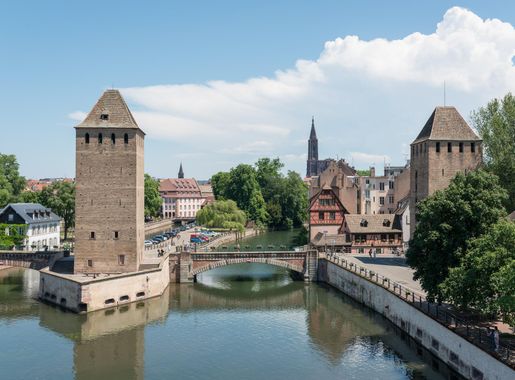
Strasbourg: A Symphony of Cultures and History
Strasbourg: Where French and German cultures meet, offering a rich blend of history, architecture, cuisine, and a vibrant arts scene in the heart of Alsace.
Strasbourg is a city where French and German cultures merge, creating a unique and enchanting atmosphere. Located in the Alsace region of France, Strasbourg offers a rich tapestry of history, architecture, and cuisine that delights every visitor. The city's old town, known as Grande Île, is a UNESCO World Heritage site. Here, you can stroll through narrow cobblestone streets, admire the half-timbered houses, and visit the awe-inspiring Strasbourg Cathedral, which towers over the city with its intricate Gothic architecture. Strasbourg is also renowned for its picturesque canals and charming squares. The Petite France district is a must-see, with its quaint buildings and scenic waterways. This area was once home to tanners, millers, and fishermen, and it retains a medieval charm that transports you back in time. The city's numerous bridges, such as the Ponts Couverts, provide perfect vantage points for photography and leisurely walks. Food lovers will find Strasbourg a paradise. Alsatian cuisine blends French finesse with hearty German influences. Be sure to try the local specialties like tarte flambée, choucroute garnie, and of course, the famous Alsace wines. The vibrant market at Place Broglie offers a taste of local produce and delicacies. Culture enthusiasts will appreciate Strasbourg's thriving arts scene. The city hosts numerous festivals throughout the year, including the famous Christmas market, one of the oldest and largest in Europe. Museums, theaters, and concert halls provide endless opportunities for exploration and entertainment. Strasbourg is also a symbol of European unity, housing important institutions like the European Parliament and the Council of Europe.
Local tips in Strasbourg
- Visit the Strasbourg Cathedral early in the morning to avoid crowds and enjoy the best light for photos.
- Take a boat tour along the canals for a unique perspective of the city and its beautiful architecture.
- Explore the Petite France district on foot to fully appreciate its medieval charm and scenic views.
- Try the local Alsace wines at one of the many wine bars or cellars in the city.
- If visiting during winter, don't miss the Christmas market at Place Broglie, known for its festive atmosphere and traditional crafts.
- Check the calendar for local festivals and events to enhance your visit with cultural experiences.
Neighbourhoods in Strasbourg
Strasbourg: A Symphony of Cultures and History
Strasbourg is a city where French and German cultures merge, creating a unique and enchanting atmosphere. Located in the Alsace region of France, Strasbourg offers a rich tapestry of history, architecture, and cuisine that delights every visitor. The city's old town, known as Grande Île, is a UNESCO World Heritage site. Here, you can stroll through narrow cobblestone streets, admire the half-timbered houses, and visit the awe-inspiring Strasbourg Cathedral, which towers over the city with its intricate Gothic architecture. Strasbourg is also renowned for its picturesque canals and charming squares. The Petite France district is a must-see, with its quaint buildings and scenic waterways. This area was once home to tanners, millers, and fishermen, and it retains a medieval charm that transports you back in time. The city's numerous bridges, such as the Ponts Couverts, provide perfect vantage points for photography and leisurely walks. Food lovers will find Strasbourg a paradise. Alsatian cuisine blends French finesse with hearty German influences. Be sure to try the local specialties like tarte flambée, choucroute garnie, and of course, the famous Alsace wines. The vibrant market at Place Broglie offers a taste of local produce and delicacies. Culture enthusiasts will appreciate Strasbourg's thriving arts scene. The city hosts numerous festivals throughout the year, including the famous Christmas market, one of the oldest and largest in Europe. Museums, theaters, and concert halls provide endless opportunities for exploration and entertainment. Strasbourg is also a symbol of European unity, housing important institutions like the European Parliament and the Council of Europe.
When is the best time to go to Strasbourg?
Iconic landmarks you can’t miss
Cathédrale Notre-Dame-de-Strasbourg
Discover the breathtaking beauty of Cathédrale Notre-Dame-de-Strasbourg, an iconic Gothic masterpiece and UNESCO World Heritage site in the heart of Strasbourg.
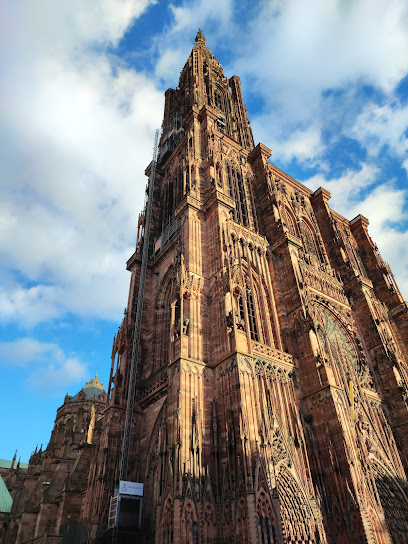
Parc de l'Orangerie
Discover the enchanting beauty of Parc de l'Orangerie, a serene city park in Strasbourg, perfect for relaxation, family fun, and nature exploration.
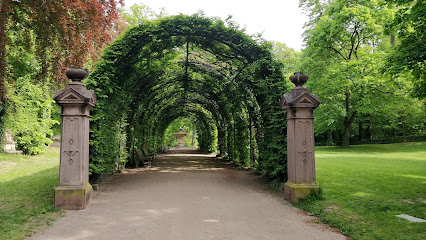
Place Kléber
Explore Place Kléber, Strasbourg's historic square, where stunning architecture meets vibrant culture and lively events year-round.
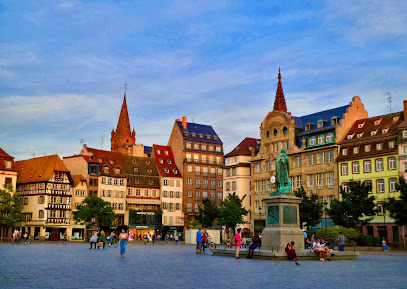
Barrage Vauban
Explore the historical Barrage Vauban in Strasbourg, a stunning architectural marvel offering breathtaking views and a glimpse into the city's rich heritage.
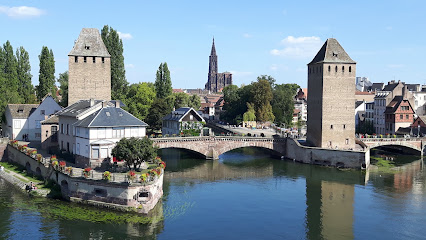
Parc de l'Étoile
Experience the tranquil beauty of Parc de l'Étoile, a lush urban park in Strasbourg perfect for relaxation and exploration of the city's rich culture.
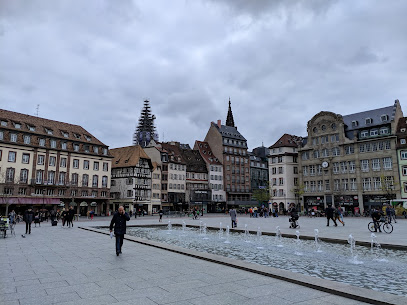
La Petite France
Explore La Petite France, Strasbourg's enchanting quarter, filled with canals, historic architecture, and vibrant culture, making it a must-see destination.
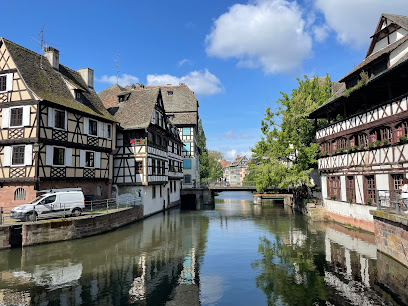
Parc de la Citadelle
Discover the beauty of Parc de la Citadelle, a tranquil park in Strasbourg offering lush landscapes, historical charm, and serene escape from the city buzz.
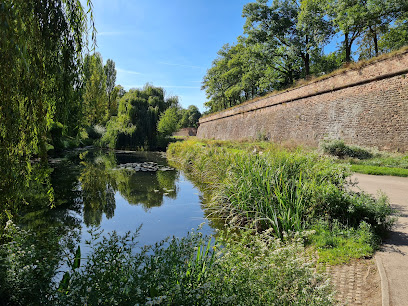
Alsatian Museum
Explore the rich heritage of Alsace at the Alsatian Museum, where history and culture come alive through captivating exhibits and unique artifacts.

St. Thomas Church
Discover the stunning beauty and rich history of St. Thomas Church, an architectural gem in Strasbourg, France, known for its breathtaking stained glass and magnificent organ.
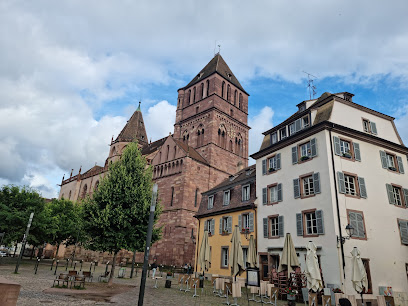
Pier Batorama Rohan Palace
Experience the enchanting waterways of Strasbourg with Batorama's captivating boat tours, showcasing stunning views and rich historical insights.
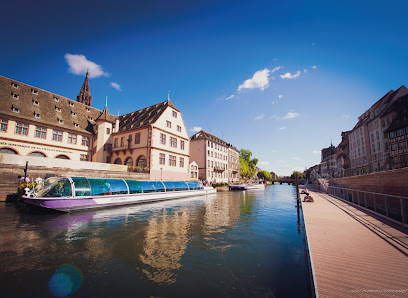
Ponts Couverts de Strasbourg
Explore the historical Ponts Couverts de Strasbourg, a captivating blend of architecture and scenic beauty in the heart of the city.
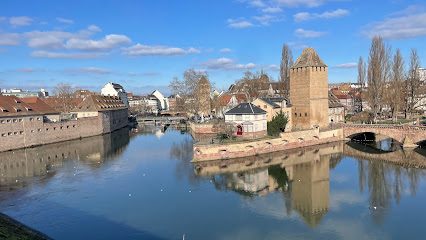
Historical Museum of the City of Strasbourg
Explore the fascinating history of Strasbourg at its Historical Museum, where culture and heritage come alive through engaging exhibits and artifacts.
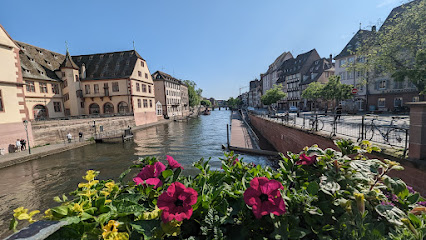
Cave Historique des Hospices de Strasbourg
Explore the rich winemaking heritage at Cave Historique des Hospices de Strasbourg, a captivating blend of history and fine wines in Alsace.
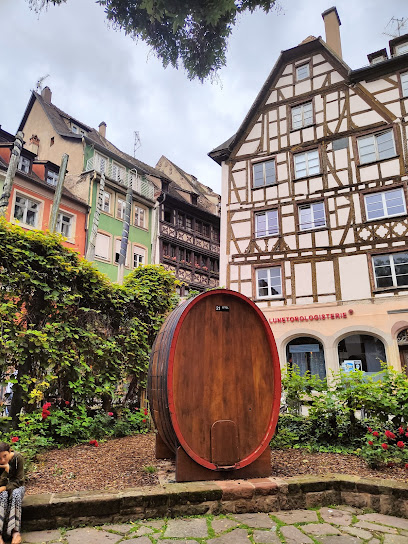
Palais du Rhin
Explore the grandeur of Palais du Rhin, a historical landmark in Strasbourg showcasing stunning architecture and rich cultural heritage.
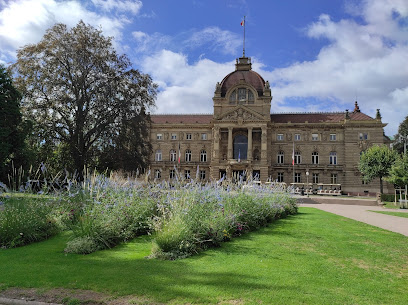
Square Louise-Weiss
Experience the serene beauty of Square Louise-Weiss, a peaceful city park in the heart of Strasbourg, perfect for relaxation and cultural exploration.

Unmissable attractions to see
Europa-Park
Discover the magic of Europa-Park, Europe's thrilling amusement park filled with rides, attractions, and cultural experiences for the whole family.
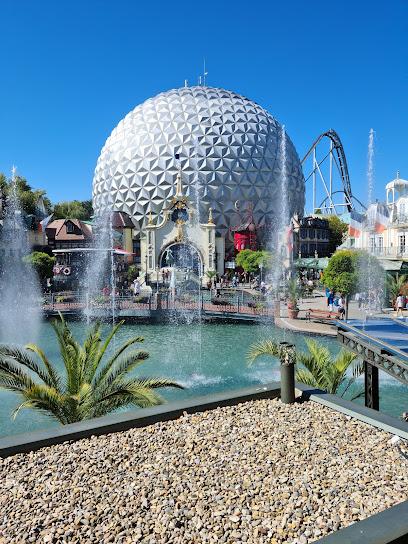
Château du Haut-Kœnigsbourg
Explore the enchanting Château du Haut-Kœnigsbourg, a medieval castle in Alsace offering stunning views and rich history.
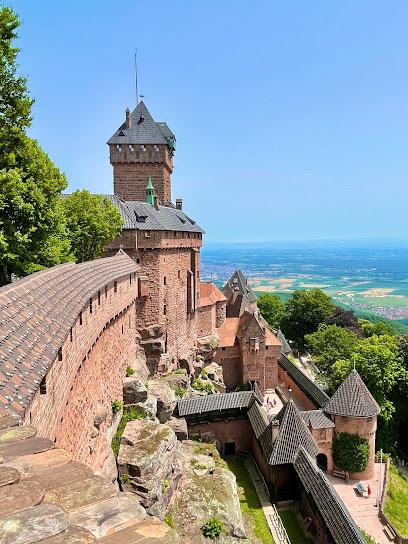
Parc de l'Orangerie
Discover the serene beauty of Parc de l'Orangerie, a lush city park in Strasbourg perfect for relaxation and outdoor activities.
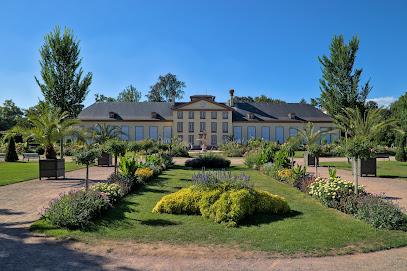
Place Kléber
Discover the vibrant heart of Strasbourg at Place Kléber, a cultural landmark filled with history, shops, and charm.
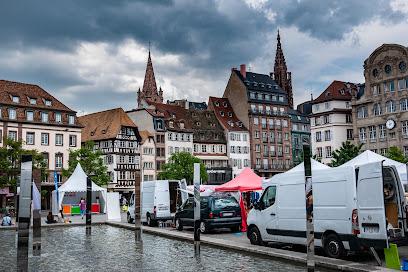
Jardin des Deux Rives
Discover the enchanting Jardin des Deux Rives in Strasbourg, a cross-border garden that combines lush landscapes and cultural heritage.
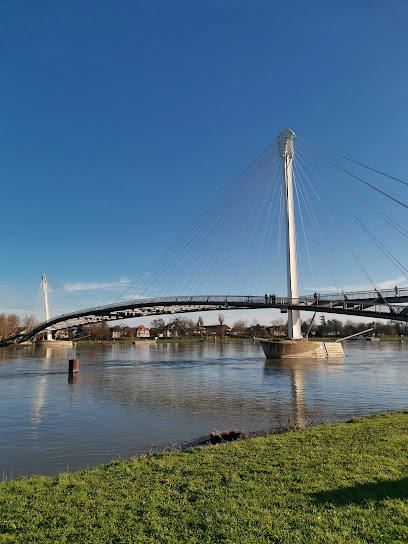
Caracalla Spa
Experience the ultimate in relaxation at Caracalla Spa, a premier thermal bath and wellness center in Baden-Baden, Germany, where tranquility meets luxury.
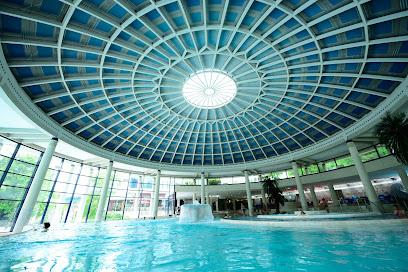
Struthof
Visit Struthof, a powerful memorial and museum in the Vosges Mountains honoring the victims of the Holocaust with moving exhibits and serene landscapes.
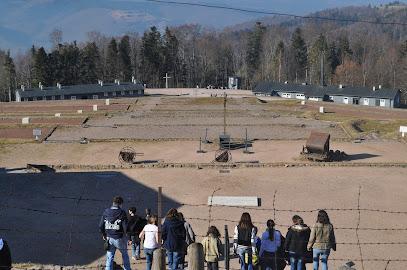
Black Forest
Experience the breathtaking landscapes and rich culture of the Black Forest, Germany's enchanting mountain range filled with adventure and serenity.
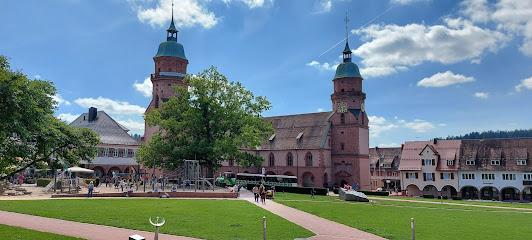
Allerheiligen-Wasserfälle
Explore the breathtaking Allerheiligen-Wasserfälle—a natural wonder in the heart of the Black Forest, perfect for hiking and photography.
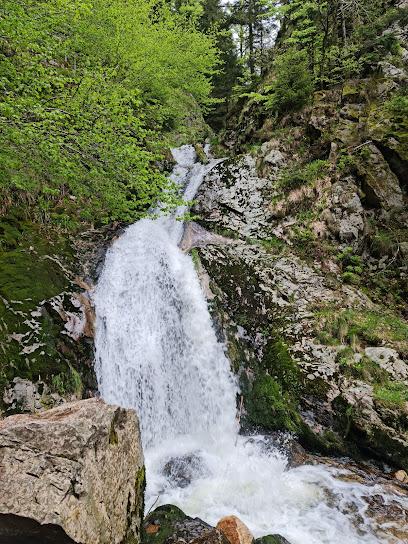
Strasbourg Museum of Modern and Contemporary Art
Explore the vibrant world of contemporary art at the Strasbourg Museum of Modern and Contemporary Art, showcasing a vast collection of innovative works.
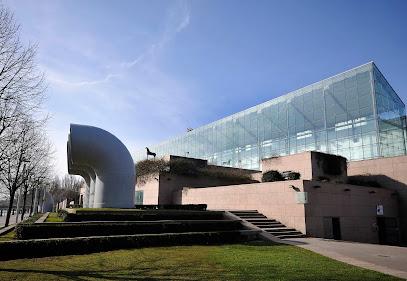
Le Vaisseau
Explore the interactive world of science at Le Vaisseau in Strasbourg, a must-visit family-friendly museum filled with fun and discovery.
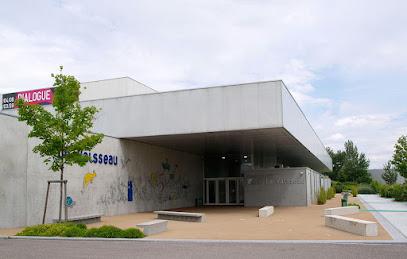
The Baden-Baden Casino
Discover the grandeur of Baden-Baden Casino, an iconic blend of history, elegance, and entertainment in the heart of Germany.
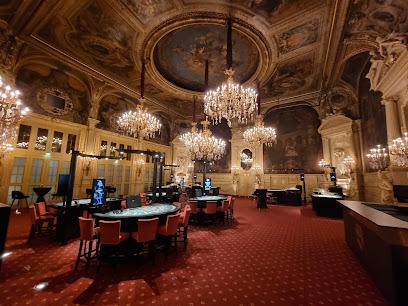
Geroldsauer Wasserfall
Experience the breathtaking beauty of Geroldsauer Wasserfall in Baden-Baden, a natural wonder perfect for nature lovers and adventure seekers.
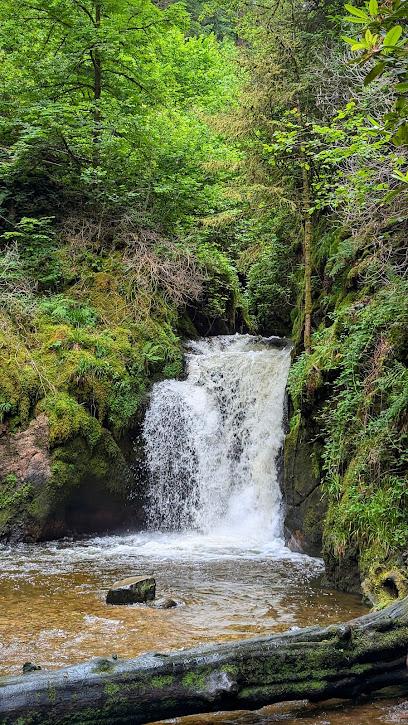
Alsatian Museum
Dive into the rich history of Alsace at the Alsatian Museum in Strasbourg, where culture, tradition, and artistry come together.
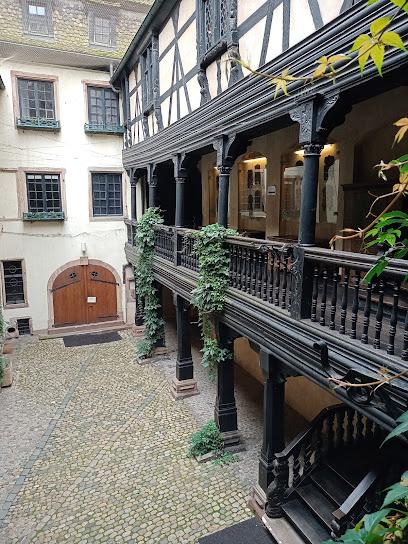
St. Thomas Church
Explore the architectural beauty and spiritual essence of St. Thomas Church, a historic gem in the heart of Strasbourg, France.
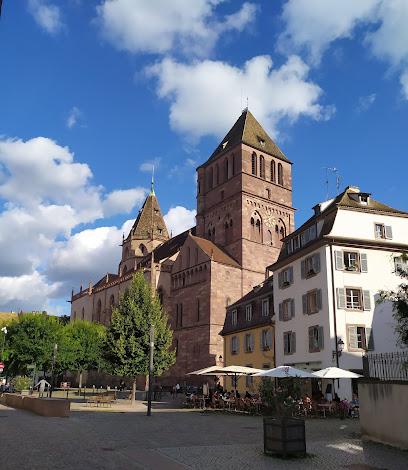
Essential places to dine
La Corde à Linge
Discover La Corde à Linge in Strasbourg: A vibrant dining experience offering traditional Alsatian cuisine and craft beverages in a charming atmosphere.

Le Tire-Bouchon
Experience authentic Alsatian cuisine in Strasbourg at Le Tire-Bouchon - where tradition meets taste in a cozy setting.
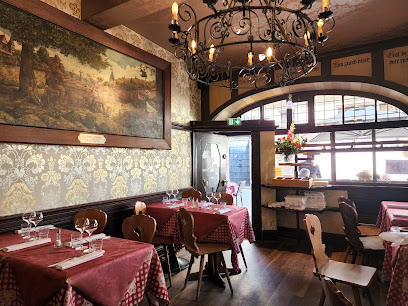
Restaurant Gurtlerhoft
Experience the authentic flavors of Alsace at Restaurant Gurtlerhoft in Strasbourg - a culinary journey through French cuisine.
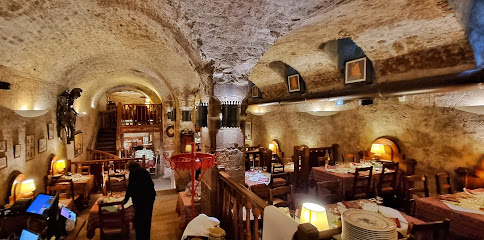
La Hache
Discover La Hache: A delightful bistro and brewery in Strasbourg offering exquisite French cuisine and local flavors in a warm ambiance.

Le Baeckeoffe d'Alsace
Discover the authentic flavors of Alsace at Le Baeckeoffe d'Alsace, where traditional French cuisine meets warm hospitality.
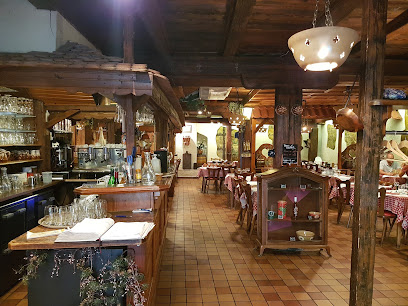
Restaurant Alsacien Strasbourg Schnockeloch
Experience authentic Alsatian cuisine at Schnockeloch in Strasbourg - where tradition meets flavor in every dish.
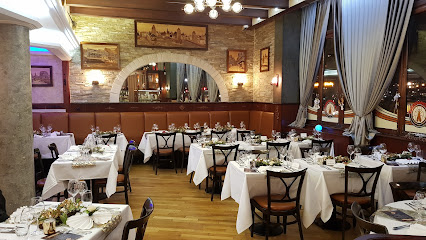
Aux Armes de Strasbourg
Discover the essence of Alsatian cuisine at Aux Armes de Strasbourg – where tradition meets flavor in an enchanting setting.

La Cloche à Fromage RESTAURANT
Experience the essence of French cuisine at La Cloche à Fromage in Strasbourg—where exquisite flavors meet elegant dining.
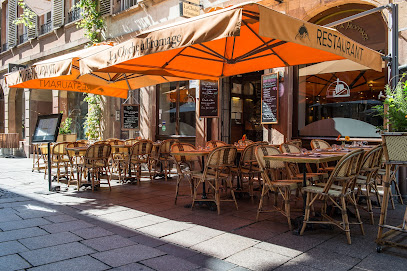
Restaurant Le Kuhn
Discover exquisite French and Mediterranean cuisine at Restaurant Le Kuhn in Strasbourg—where every meal is a celebration of flavor.
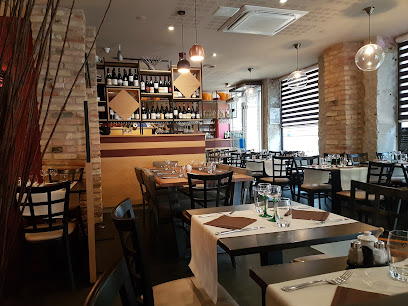
Chez l’Oncle Freddy
Savor authentic Alsatian cuisine at Chez l’Oncle Freddy in Strasbourg - a culinary gem offering local specialties and fine wines.
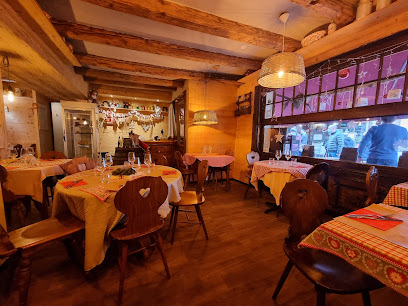
Au Vieux Strasbourg
Experience authentic Alsatian cuisine at Au Vieux Strasbourg – where tradition meets flavor in every dish.

Le Clou
Savor authentic Alsatian flavors at Le Clou - Strasbourg's charming French restaurant offering a delightful culinary experience.
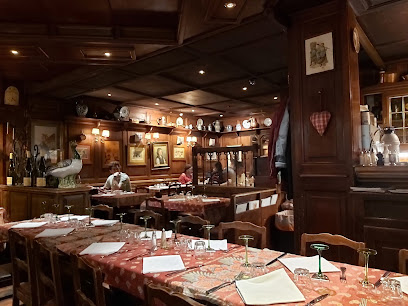
Les Sales Gosses
Experience authentic French cuisine in Strasbourg at Les Sales Gosses - where tradition meets taste in a warm atmosphere.
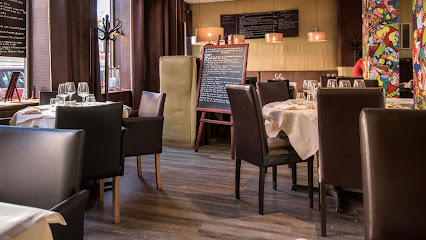
Muensterstuewel
Experience authentic Alsatian cuisine at Muensterstuewel – where tradition meets taste in the heart of Strasbourg.
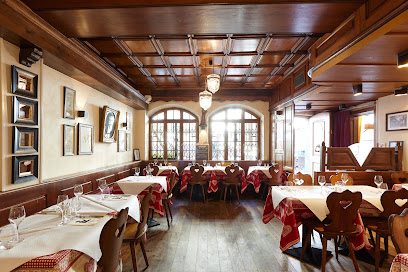
Restaurant Au Pont Corbeau
Experience traditional Alsatian flavors at Restaurant Au Pont Corbeau in Strasbourg - where every meal is a celebration of local culture.
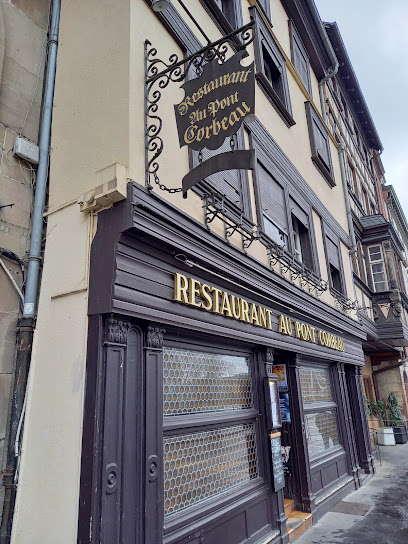
Markets, malls and hidden boutiques
Place des Halles
Explore Place des Halles: Strasbourg's premier shopping mall with a variety of shops, dining options, and a vibrant atmosphere.
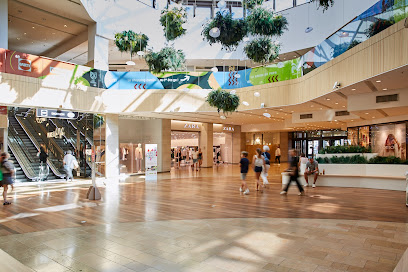
Galeries Lafayette Strasbourg
Discover a world of fashion and gourmet delights at Galeries Lafayette Strasbourg, the ultimate shopping destination in the heart of the city.
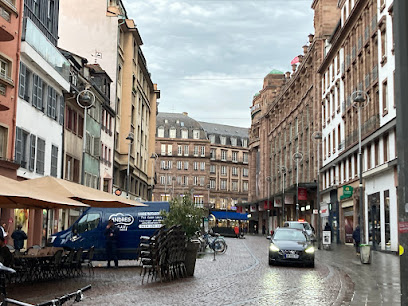
L'Aubette
Explore L'Aubette in Strasbourg: a vibrant shopping mall filled with unique boutiques, delightful cafes, and a touch of local culture.
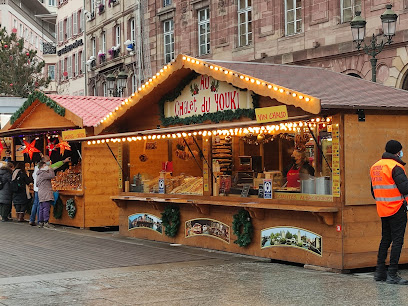
Uniqlo
Discover the essence of modern fashion at Uniqlo in Strasbourg, where quality meets style for the whole family.
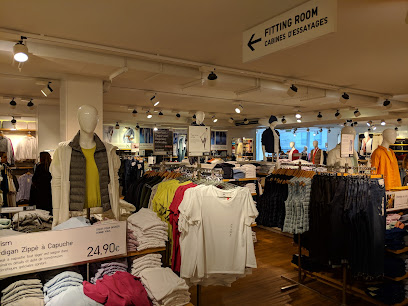
Nature and Discoveries
Explore Strasbourg's Nature and Discoveries for unique eco-friendly gifts that capture the essence of the region's natural beauty and culture.
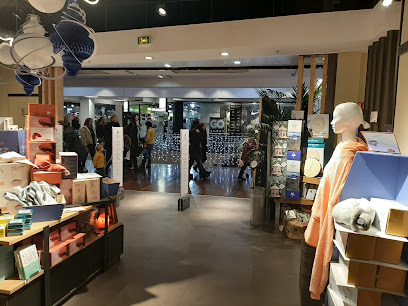
Louis Vuitton Strasbourg
Immerse yourself in luxury at Louis Vuitton Strasbourg, where exquisite craftsmanship meets timeless elegance in a delightful shopping experience.
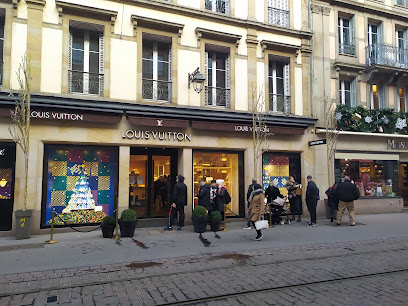
Christmas in Alsace
Discover the enchanting charm of Christmas in Alsace with festive markets, delightful treats, and a magical winter atmosphere that captivates all visitors.
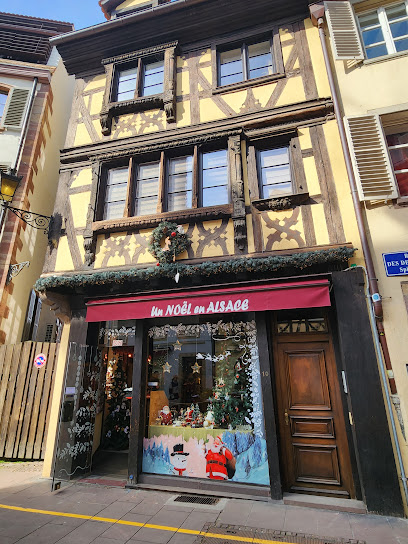
Flying Tiger Copenhagen Strasbourg
Explore Flying Tiger Copenhagen Strasbourg for unique gifts, home goods, and creative toys in a vibrant and playful shopping environment.
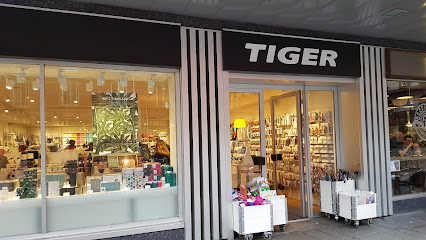
Oxfam shop Strasbourg
Explore the charming Oxfam shop in Strasbourg for vintage clothing and second-hand books, supporting ethical shopping and sustainability.
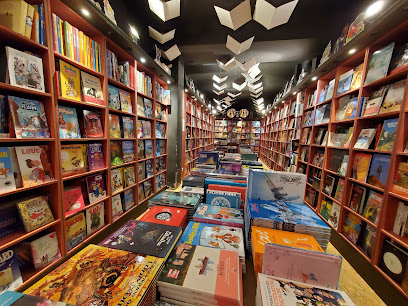
Shop Designer Les Herbes Folles
Explore the enchanting Shop Designer Les Herbes Folles in Strasbourg, where unique gifts and artisanal treasures await every visitor.

Bretzel Airlines - Strasbourg
Discover the charm of Strasbourg at Bretzel Airlines, your go-to gift shop for unique souvenirs, stylish clothing, and local treasures.

Wolfberger – Boutique de Strasbourg
Discover the essence of Alsatian wine culture at Wolfberger, where tradition meets exquisite taste in the heart of Strasbourg.
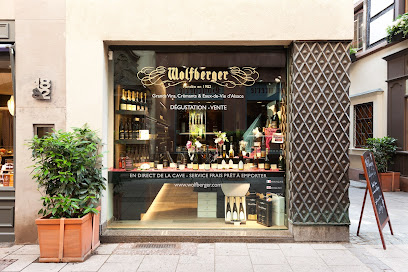
Pylones
Explore Pylones, Strasbourg's whimsical gift shop, brimming with unique souvenirs, home goods, and quirky treasures that capture the city's charm.
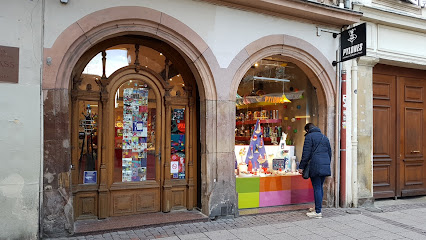
Le Générateur - Boutique de Créateurs
Explore Le Générateur in Strasbourg for an authentic selection of handcrafted home goods, jewelry, and unique records, showcasing local artisans' creativity.
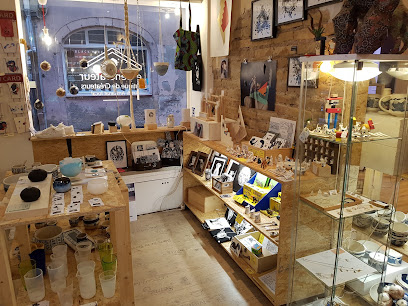
G-Star RAW Store
Discover the latest in denim and cutting-edge fashion at the G-Star RAW Store in Strasbourg, where style meets quality.
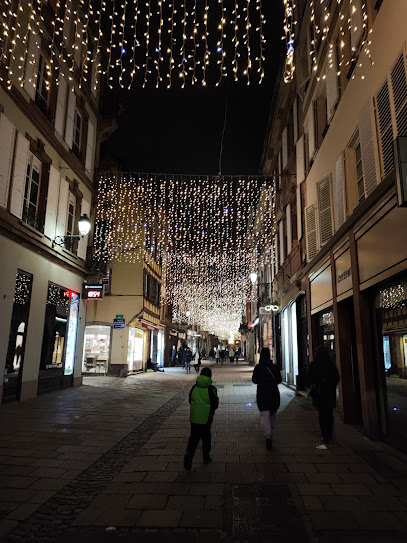
Essential bars & hidden hideouts
Les Berthom
Discover Les Berthom, a vibrant bar in Strasbourg offering a delightful selection of drinks and a lively atmosphere perfect for a memorable night out.
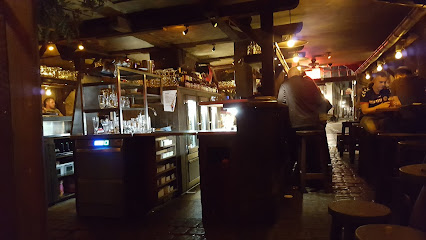
Jeannette and the Cycleux
Experience the vibrant flavors of Strasbourg at Jeannette and the Cycleux, where cocktails and bistro classics combine in a lively atmosphere.
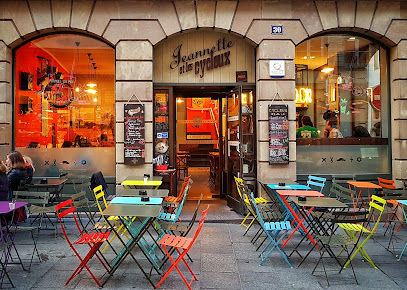
Exil's
Discover the vibrant nightlife of Strasbourg at Exil's Bar, where delightful drinks and a lively atmosphere await you.
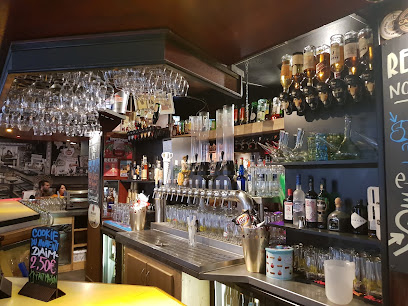
Le Grincheux
Discover Le Grincheux, the charming bar in Strasbourg offering delicious drinks, delightful ambiance, and a vibrant local culture.
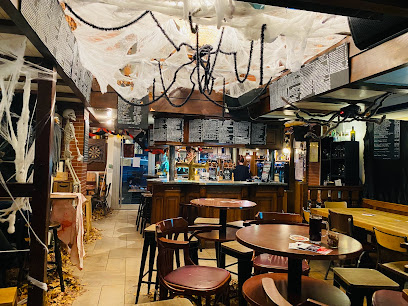
What the Fox
Experience the vibrant nightlife of Strasbourg at What the Fox, a bar where delightful drinks and a lively atmosphere come together.
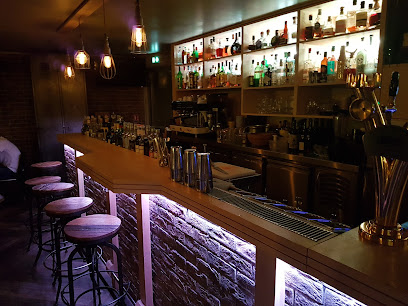
Code Bar
Discover the vibrant cocktail culture of Strasbourg at Code Bar, where innovative drinks meet a lively atmosphere perfect for nightlife enthusiasts.
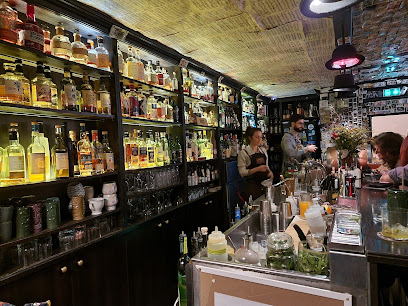
Kitsch'n Bar
Discover the lively atmosphere and diverse menu at Kitsch'n Bar, a must-visit destination in the heart of Strasbourg.
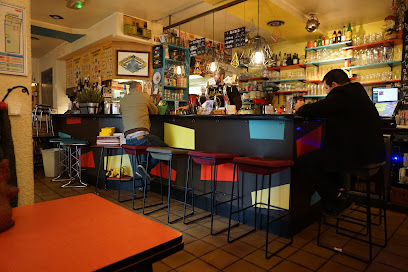
Le Douanier
Discover Le Douanier, Strasbourg's premier cocktail bar, where innovative drinks and a lively atmosphere come together for an unforgettable night out.
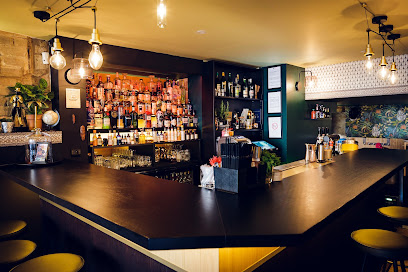
L'Alchimiste
Discover L'Alchimiste, Strasbourg's charming bar featuring exquisite cocktails and a cozy atmosphere, perfect for a night out or a relaxing evening.

Le Garde Fou
Experience the vibrant nightlife of Strasbourg at Le Garde Fou, a trendy bar offering a diverse drink menu and lively atmosphere.
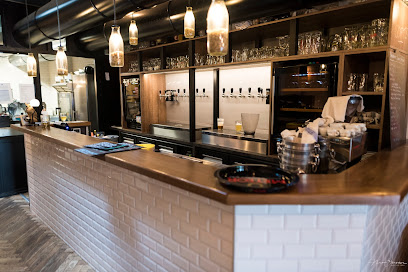
Blue Moon Bar
Discover the lively ambiance and eclectic drinks at Blue Moon Bar in Strasbourg, where the night comes alive with cocktails, karaoke, and unforgettable memories.
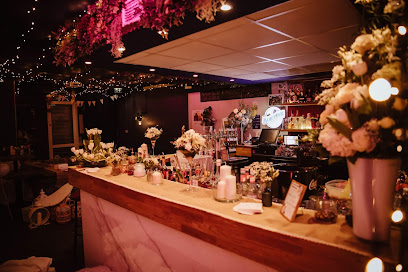
Bar Le Gayot
Experience the lively charm of Bar Le Gayot in Strasbourg, where local culture meets a vibrant nightlife atmosphere.
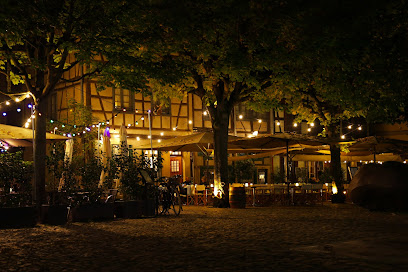
La Mandragore
Discover the vibrant atmosphere at La Mandragore, a charming bar in Strasbourg offering exquisite drinks and a taste of local culture.
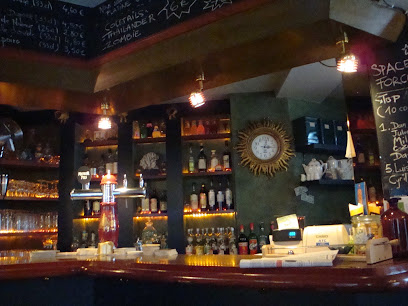
Black & Wine
Experience the best of French cuisine and fine wines at Black & Wine, a charming wine bar in the heart of Strasbourg.

Le Schluch
Discover the heart of Strasbourg's nightlife at Le Schluch, a vibrant bar offering local drinks and a welcoming atmosphere for all.
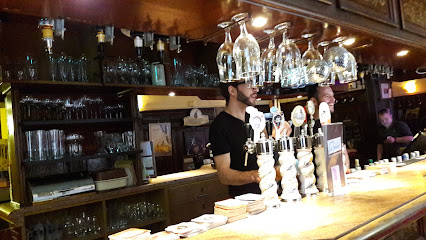
Local Phrases
-
- HelloBonjour
[bon-zhoor] - GoodbyeAu revoir
[oh-re-vwar] - YesOui
[wee] - NoNon
[noh] - Please/You're welcomeS'il vous plaît/De rien
[seel voo pleh/duh ryen] - Thank youMerci
[mehr-see] - Excuse me/SorryExcusez-moi/Désolé
[ex-kyoo-zay mwah/dey-zoh-lay] - How are you?Comment ça va?
[koh-mohn sah vah] - Fine. And you?Bien. Et vous?
[byen. ay voo] - Do you speak English?Parlez-vous anglais?
[par-leh voo ahn-glay] - I don't understandJe ne comprends pas
[zhuh nuh kohm-prahnd pah]
- HelloBonjour
-
- I'd like to see the menu, pleaseJe voudrais voir le menu, s'il vous plaît
[zhuh voo-dray vwar luh meh-nyoo, seel voo pleh] - I don't eat meatJe ne mange pas de viande
[zhuh nuh mahnj pah duh vyand] - Cheers!Santé!
[sahn-tay] - I would like to pay, pleaseJe voudrais payer, s'il vous plaît
[zhuh voo-dray pay-ay, seel voo pleh]
- I'd like to see the menu, pleaseJe voudrais voir le menu, s'il vous plaît
-
- Help!À l'aide!
[ah layd] - Go away!Allez-vous en!
[ah-lay voo ahn] - Call the Police!Appelez la police!
[ah-peh-lay lah poh-lees] - Call a doctor!Appelez un médecin!
[ah-peh-lay uh meh-deh-sahn] - I'm lostJe suis perdu
[zhuh swee pair-doo] - I'm illJe suis malade
[zhuh swee mah-lahd]
- Help!À l'aide!
-
- I'd like to buy...Je voudrais acheter...
[zhuh voo-dray zah-shtay...] - I'm just lookingJe regarde juste
[zhuh ruh-gard zhust] - How much is it?Combien ça coûte?
[kohm-byen sah koot] - That's too expensiveC'est trop cher
[say troh shair] - Can you lower the price?Pouvez-vous baisser le prix?
[poo-vez voo bay-say luh pree]
- I'd like to buy...Je voudrais acheter...
-
- What time is it?Quelle heure est-il?
[kehl uhr eh-teel] - It's one o'clockIl est une heure
[eel ehz oon uhr] - Half past (10)Dix heures et demi
[dee-uhrz ey duh-mee] - MorningMatin
[mah-tahn] - AfternoonAprès-midi
[ah-preh-mee-dee] - EveningSoir
[swahr] - YesterdayHier
[yehr] - TodayAujourd'hui
[oh-zhoor-dwee] - TomorrowDemain
[duh-mahn] - 1Un
[uhn] - 2Deux
[duh] - 3Trois
[trwah] - 4Quatre
[katr] - 5Cinq
[sank] - 6Six
[sees] - 7Sept
[sept] - 8Huit
[wheet] - 9Neuf
[nuhf] - 10Dix
[dee]
- What time is it?Quelle heure est-il?
-
- Where's a/the...?Où est un/le...?
[oo eh uh/luh] - What's the address?Quelle est l'adresse?
[kehl eh la-dress] - Can you show me (on the map)?Pouvez-vous me montrer (sur la carte)?
[poo-vez voo muh mohn-tray (soor lah kart)] - When's the next (bus)?Quand est le prochain (bus)?
[kahnd eh luh proh-shahn (bus)] - A ticket (to ....)Un billet (pour ...)
[uhn bee-yay (poor)]
- Where's a/the...?Où est un/le...?
History of Strasbourg
-
Strasbourg's history dates back to Roman times when it was known as Argentoratum. Founded in 12 BC, it served as an important military outpost in the Roman Empire. The strategic location along the Rhine River made it a vital hub for trade and defense.
-
In the Middle Ages, Strasbourg emerged as a significant economic center. By 1262, it became a Free Imperial City of the Holy Roman Empire, granting it relative autonomy. The city thrived on trade, particularly in textiles and wine, bolstered by its membership in the Hanseatic League.
-
The construction of the Strasbourg Cathedral began in 1015 and spanned several centuries, finally completing in 1439. This Gothic masterpiece, with its iconic single spire reaching 142 meters, remained the tallest building in the world for over 200 years. The cathedral is renowned for its intricate astronomical clock and stunning stained glass windows.
-
Strasbourg was a key center during the Protestant Reformation in the 16th century. Influential theologians like Martin Bucer and John Calvin spent time in the city, which embraced Protestantism and became a haven for religious reformers. The city's university, founded in 1538, played a crucial role in disseminating Reformation ideas.
-
Strasbourg's location on the border between France and Germany has made it a focal point of conflict. The city changed hands multiple times, particularly during the Franco-Prussian War (1870-1871) when it was annexed by Germany, and again after World War I when it was returned to France in 1918. These shifts have deeply influenced the city's cultural and architectural landscape.
-
During World War II, Strasbourg was annexed by Nazi Germany. The city suffered significant damage and its Jewish population faced persecution. Strasbourg was liberated by the French 2nd Armored Division in November 1944. Post-war, the city experienced a period of reconstruction and renewal.
-
In the post-war era, Strasbourg has become a symbol of European unity. It hosts several key European institutions, including the Council of Europe, the European Court of Human Rights, and the European Parliament. The city's commitment to international diplomacy underscores its role as a bridge between nations.
-
Strasbourg boasts a rich cultural tapestry, evident in its well-preserved historic center, Grande Île, a UNESCO World Heritage site. The city's unique blend of French and German influences is reflected in its cuisine, language, and architecture. Annual events like the Christmas Market, one of the oldest in Europe, highlight Strasbourg's enduring traditions and vibrant community life.
Strasbourg Essentials
-
Strasbourg is accessible by air, train, and road. The nearest international airport is Strasbourg Airport (SXB), located about 10 kilometers southwest of the city center. From the airport, you can take a shuttle train to the main railway station (Gare de Strasbourg) in just 9 minutes. High-speed trains (TGV) connect Strasbourg to major French cities like Paris, Lyon, and Marseille, as well as international destinations such as Frankfurt, Stuttgart, and Basel. If you prefer driving, Strasbourg is well-connected via the A35 and A4 motorways.
-
Strasbourg has an efficient public transportation system, including trams and buses operated by the CTS (Compagnie des Transports Strasbourgeois). The tram network is extensive and covers most of the city, making it easy to get around. Bicycles are also a popular mode of transportation, with numerous bike lanes and rental options available through services like Vélhop. Taxis and ride-sharing services like Uber are also available, though they can be more expensive.
-
The official currency in Strasbourg is the Euro (€). Credit and debit cards are widely accepted in most hotels, restaurants, and shops. ATMs are readily available throughout the city for cash withdrawals. It's advisable to carry some cash for smaller establishments, local markets, and tipping.
-
Strasbourg is generally a safe city for tourists. However, like any urban area, it's important to stay vigilant, especially in crowded places like the Gare Centrale, Place Kléber, and during major events. Petty crimes like pickpocketing can occur, so keep an eye on your belongings. Areas to be cautious include the Neuhof and Hautepierre neighborhoods, especially at night.
-
In case of emergency, dial 112 for immediate assistance, which is the general emergency number in Europe. Strasbourg has several hospitals, including Hôpital de Hautepierre and Hôpital Civil. Pharmacies are widespread and can provide over-the-counter medications. It is recommended to have travel insurance that covers medical emergencies.
-
Fashion: Do dress smart-casual, especially when dining out or visiting cultural sites. Don't wear overly casual or revealing clothing in religious places. Religion: Do respect religious customs, especially when visiting churches and the Strasbourg Cathedral. Public Transport: Do validate your ticket before boarding trams or buses. Don’t eat or drink on public transport. Greetings: Do greet people with a polite 'Bonjour' and a handshake. Don’t forget to say 'Merci' when someone helps you. Eating & Drinking: Do try local specialties like Tarte Flambée and Choucroute. Don’t rush your meal; dining is a leisurely activity.
-
To experience Strasbourg like a local, visit the Marché de Noël (Christmas Market) if you're there during the holiday season. Take a stroll through the Petite France district, known for its charming half-timbered houses and canals. Enjoy a boat tour on the Ill River for unique views of the city. For a quieter experience, explore the Orangerie Park, popular among locals for picnics and leisurely walks.
Trending Landmark in Strasbourg
-
Cathédrale Notre-Dame-de-Strasbourg
-
Parc de l'Orangerie
-
Place Kléber
-
Barrage Vauban
-
Parc de l'Étoile
-
La Petite France
-
Parc de la Citadelle
-
Alsatian Museum
-
St. Thomas Church
-
Pier Batorama Rohan Palace
-
Ponts Couverts de Strasbourg
-
Historical Museum of the City of Strasbourg
-
Cave Historique des Hospices de Strasbourg
-
Palais du Rhin
-
Square Louise-Weiss
Nearby Cities to Strasbourg
-
Things To Do in Colmar
-
Things To Do in Freiburg
-
Things To Do in Stuttgart
-
Things To Do in Basel
-
Things To Do in Heidelberg
-
Things To Do in Nancy
-
Things To Do in Zurich
-
Things To Do in Remich
-
Things To Do in Grevenmacher
-
Things To Do in Dudelange
-
Things To Do in Luxembourg City
-
Things To Do in Echternach
-
Things To Do in Lucerne
-
Things To Do in Bern
-
Things To Do in Frankfurt








